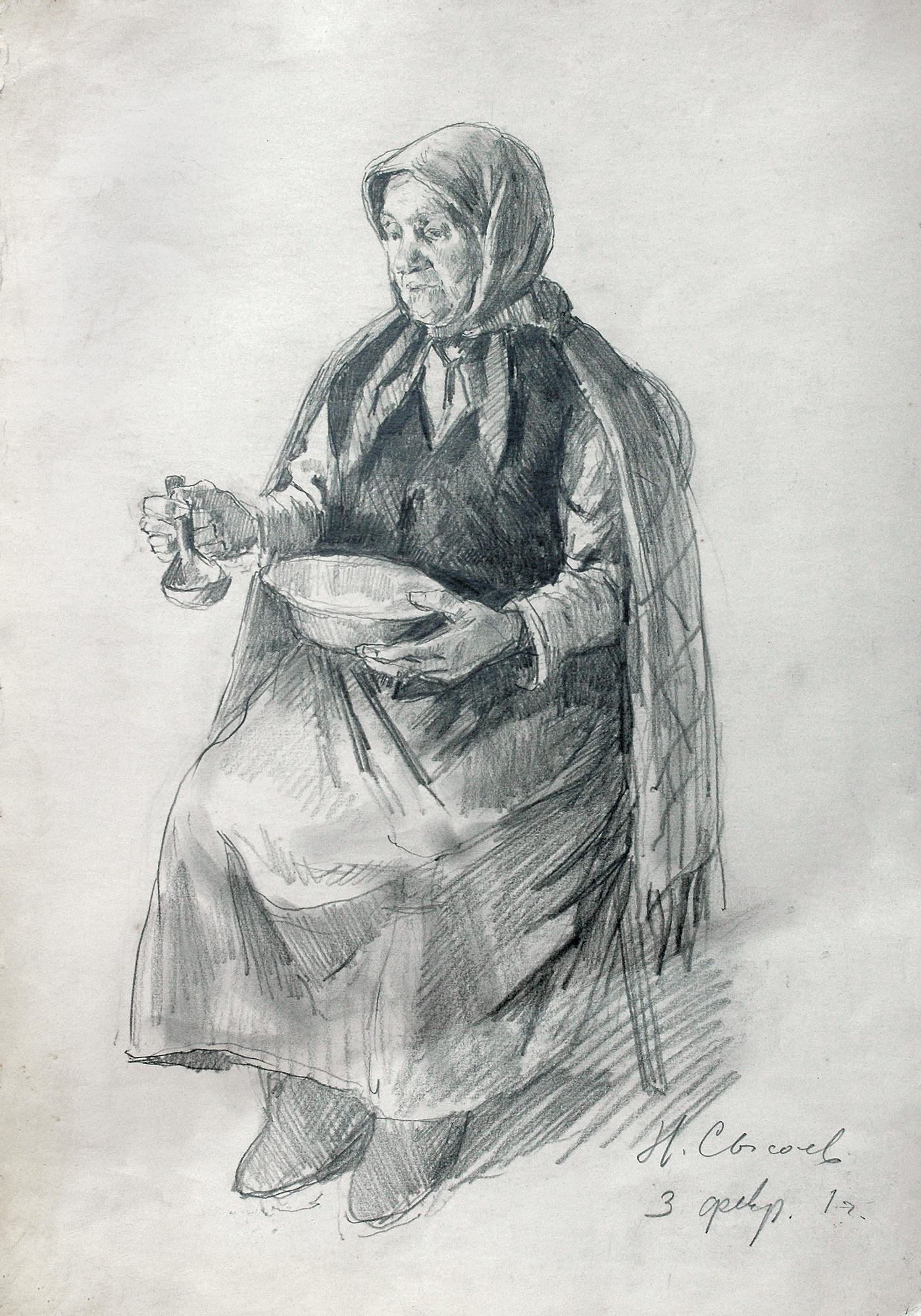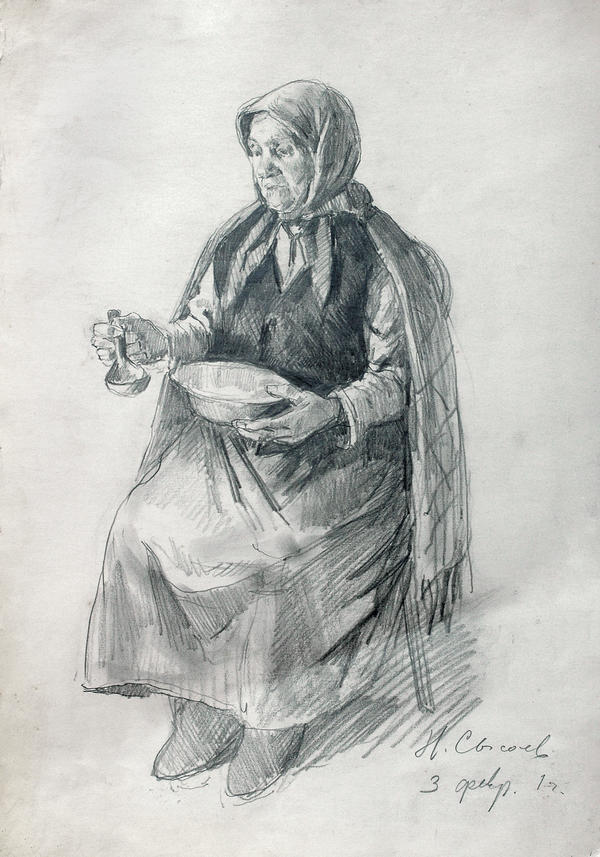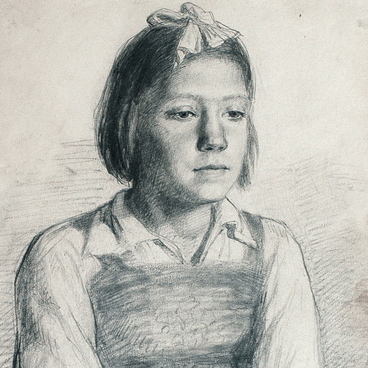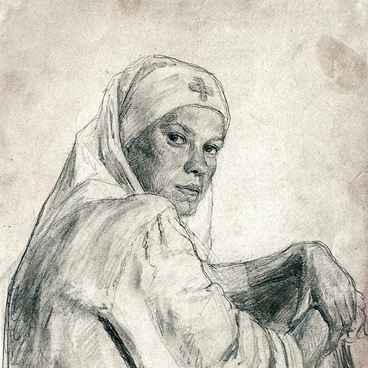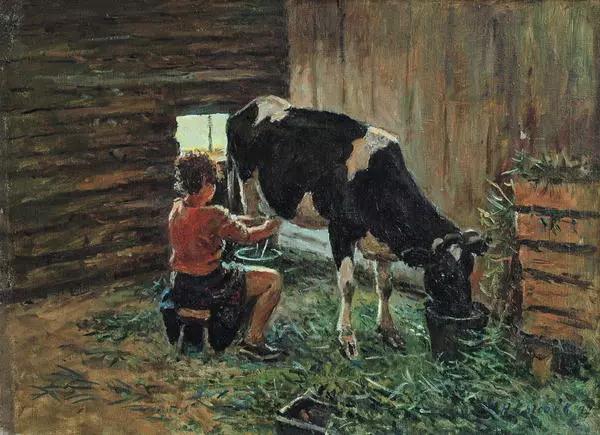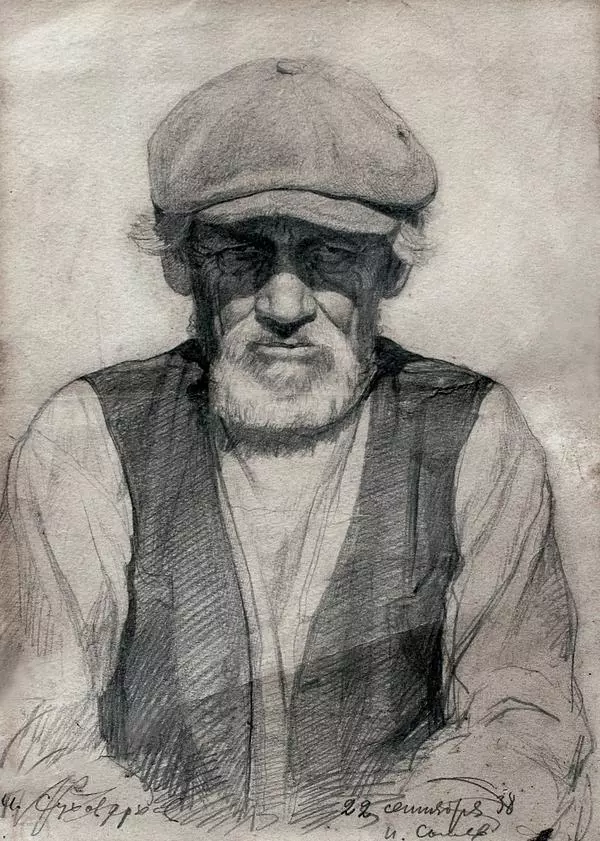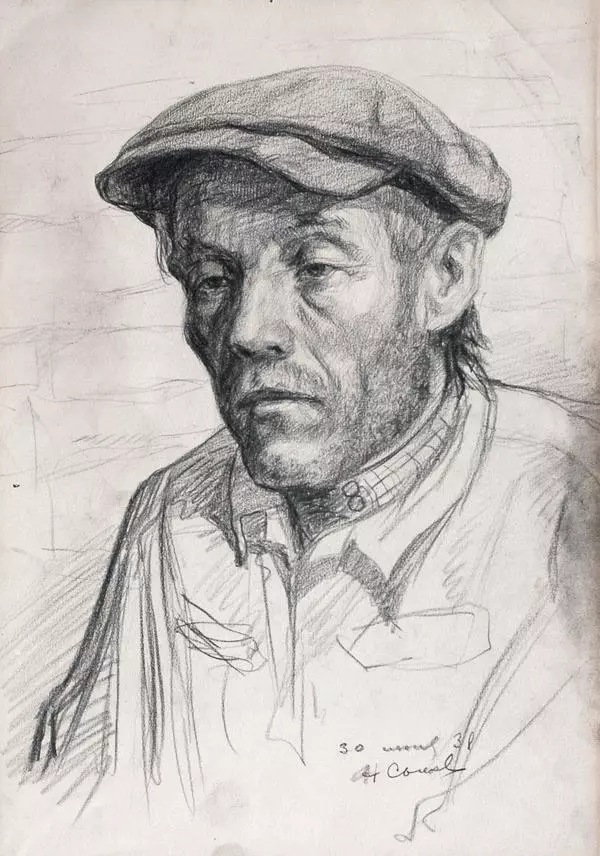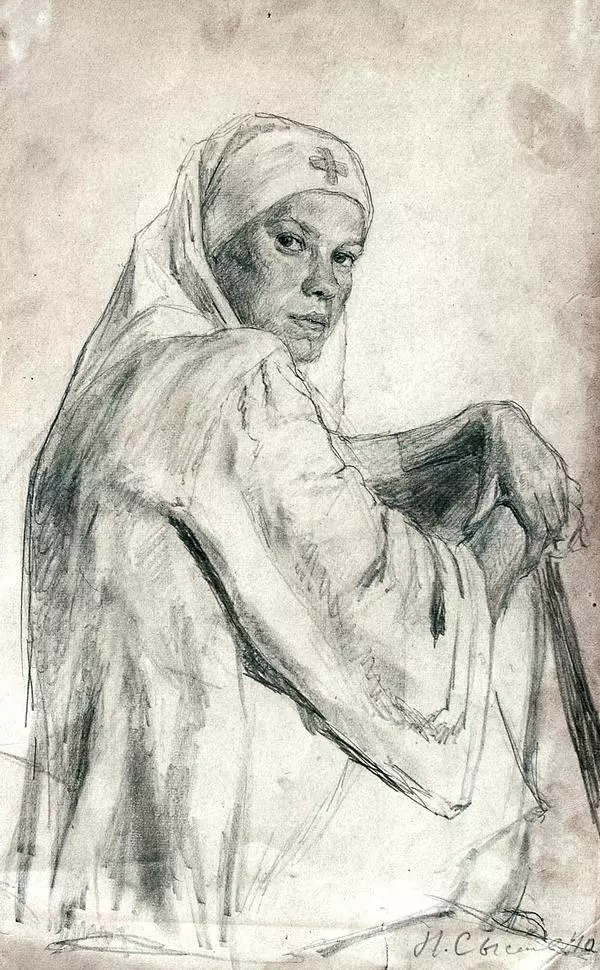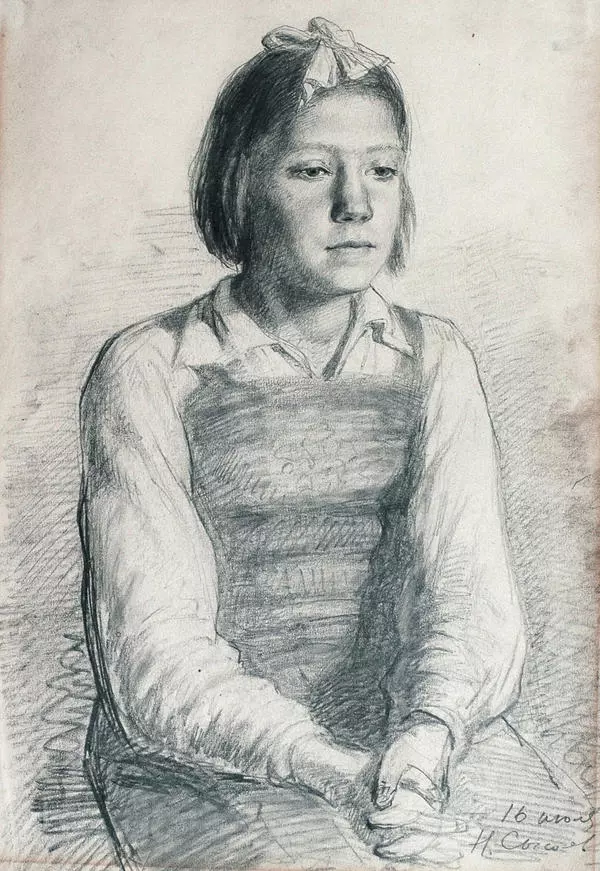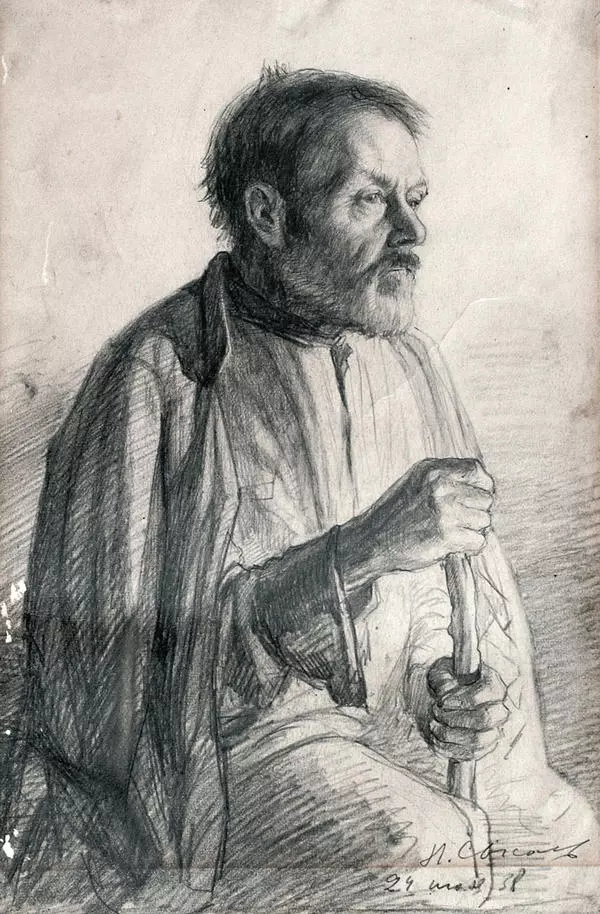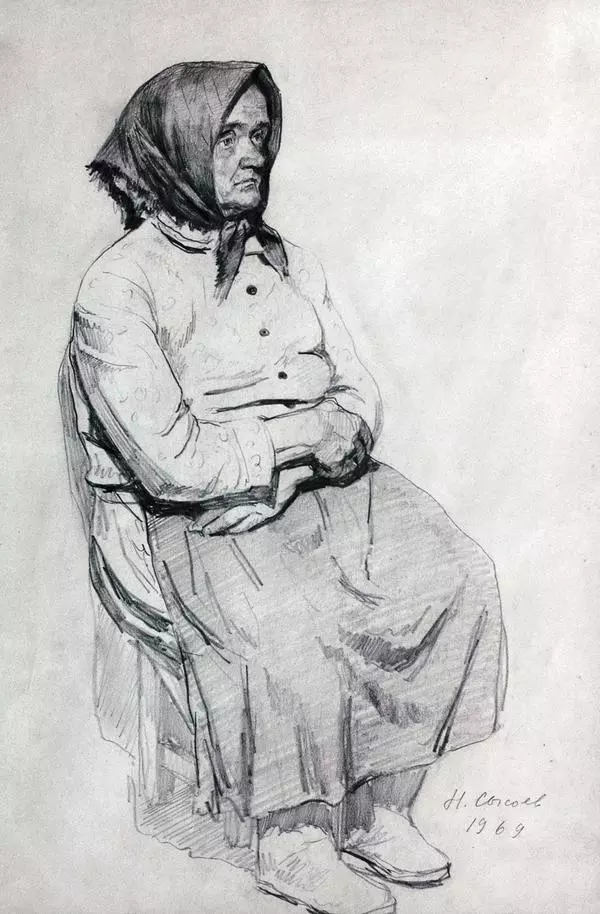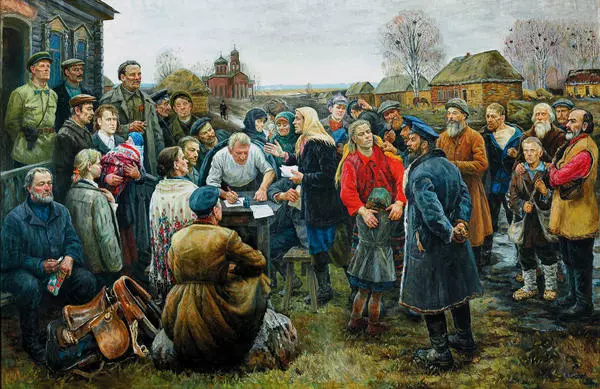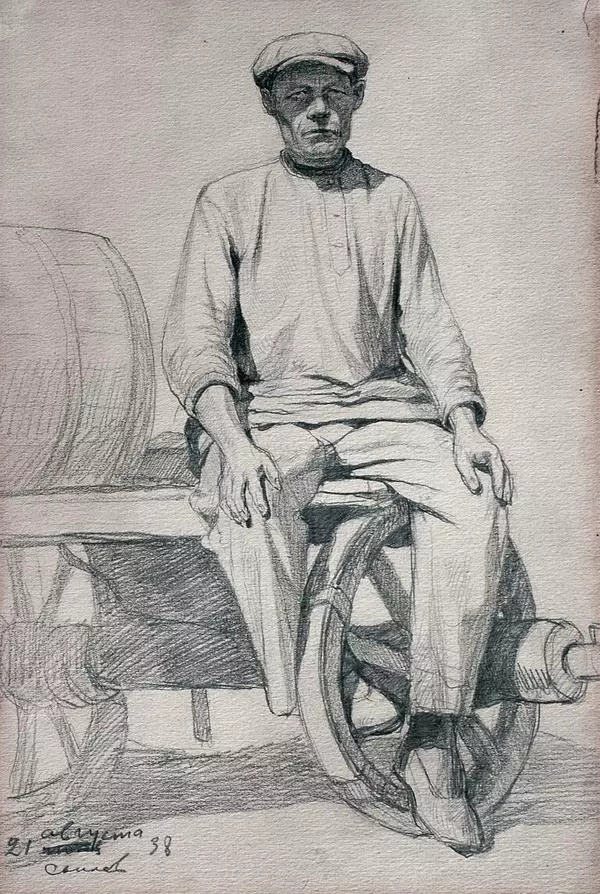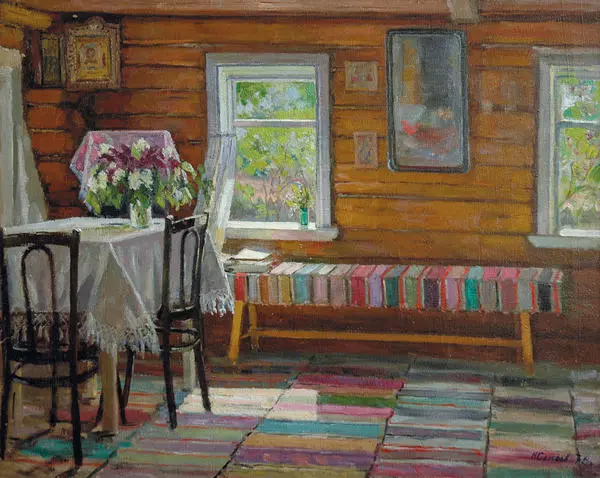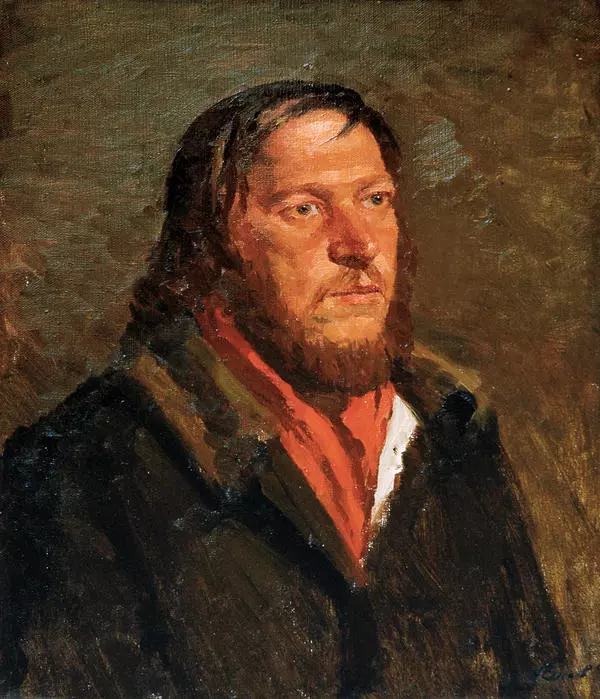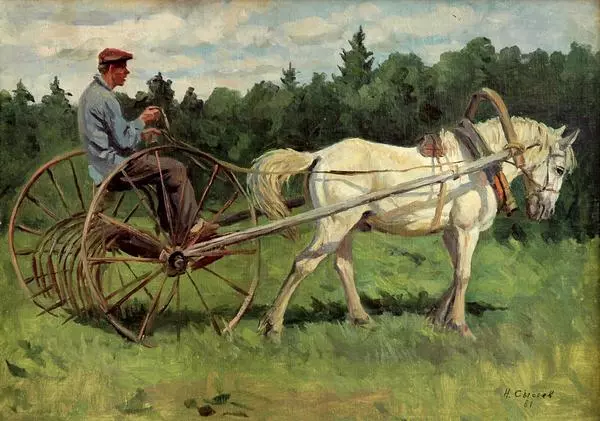This graphic drawing by Nikolai Sysoev is part of the artist’s search for a female image that would be perfect for his Mother painting. The drawing depicts an elderly woman in modest wartime clothing, holding a bowl in one hand and seemingly trying to feed someone in a gentle, unhurried and loving manner with the other. Her face is calm and strict, and her gaze lowered.
This is the story of an old woman who saved the life of a wounded partisan commander in enemy occupied territory during the Second World War. The artist was inspired by a real story he read in the Pravda newspaper in 1965, after which he set about looking for images to embody his idea.
The pencil drawing Mother is one of the painter’s numerous sketches on the topic, one of the stages of his creative search. Sysoev carefully paints the woman’s entire figure: the expression on her face; her hands, which testify of years of hard work; and the details of her clothes. With the same degree of care, the artist depicts a wooden spoon and a metal bowl, which the mother holds in her hands to feed the wounded partisan. Although the drawing is sketchy and made with a graphite pencil, the materials from which the spoon and bowl are made are distinguishable and recognizable.
The exhibition also contains a more elaborate painted version of the Mother sketch in which the artist focused more on the face of the woman, conveying, in the best sense of the word, the simplicity, tenderness and care that she gave to a perfect stranger. All the preparatory materials for the painting – sketches, studies and drawings – were created by the artist over a period of several years. He wanted to find the image of a woman-mother that would reflect the spirit of Soviet patriotism on the one hand, while on the other hand allowing him to convey the kind of warm feelings without which this feat would not have been possible.
Mother is the central picture of the artist’s war cycle. The other two paintings, In the Years of the War and Seeing off the Partisan Detachment, tell the same story and complement each other. Although the painting Mother comes second in the logical narrative, it was created by the artist ahead of the other two pictures, in 1967.
This is the story of an old woman who saved the life of a wounded partisan commander in enemy occupied territory during the Second World War. The artist was inspired by a real story he read in the Pravda newspaper in 1965, after which he set about looking for images to embody his idea.
The pencil drawing Mother is one of the painter’s numerous sketches on the topic, one of the stages of his creative search. Sysoev carefully paints the woman’s entire figure: the expression on her face; her hands, which testify of years of hard work; and the details of her clothes. With the same degree of care, the artist depicts a wooden spoon and a metal bowl, which the mother holds in her hands to feed the wounded partisan. Although the drawing is sketchy and made with a graphite pencil, the materials from which the spoon and bowl are made are distinguishable and recognizable.
The exhibition also contains a more elaborate painted version of the Mother sketch in which the artist focused more on the face of the woman, conveying, in the best sense of the word, the simplicity, tenderness and care that she gave to a perfect stranger. All the preparatory materials for the painting – sketches, studies and drawings – were created by the artist over a period of several years. He wanted to find the image of a woman-mother that would reflect the spirit of Soviet patriotism on the one hand, while on the other hand allowing him to convey the kind of warm feelings without which this feat would not have been possible.
Mother is the central picture of the artist’s war cycle. The other two paintings, In the Years of the War and Seeing off the Partisan Detachment, tell the same story and complement each other. Although the painting Mother comes second in the logical narrative, it was created by the artist ahead of the other two pictures, in 1967.
